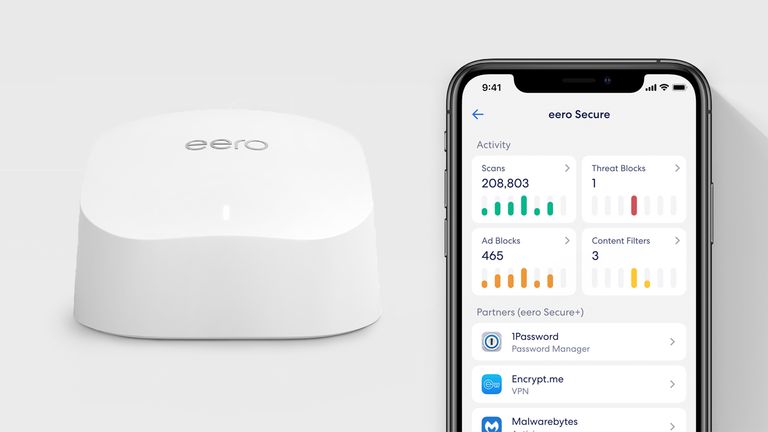

- Ring system an eero router new how to#
- Ring system an eero router new pro#
- Ring system an eero router new mac#
Set to pass through and enter MAC Address.Īs in the video I left the BGW210 wireless on in case I need to get back into the device if I'm having connectivity issues or Eero system isn't working.
Ring system an eero router new how to#
So I spent a few hours over the weekend figuring out how to set up the system including putting the BGW210 into pass through mode following this YouTube video: I was getting around 450 mbps when I ran speed tests near the modem/router combo which is on the second floor before setting up my ring system. The main improvement I was hoping for were better speeds throughout the house (especially on the rooftop deck which is pseudo 4th floor that I stream movies/sports on) since even thought I have AT&T Fiber they still gave me the BGW210 router which as I understand does not support gigabit speed. My thought process was that even though I was getting pretty good speeds all throughout my 3 story townhouse that setting up mesh would improve it slightly once I add access points, and since I needed a security system that I would kill 2 birds with one piece of tech.
Ring system an eero router new pro#
I was trying to pick a home security system and ended up picking the Ring Pro since it also is supposed to work as a WiFi 6 mesh system. I'm hoping for a bit of guidance on if the setup I am now using makes sense or not as I still have about a week and a half to return my system to BestBuy. I apologize in advance if some of the below questions are a bit dumb, I have beginner to slightly above beginner level networking knowledge.


However, the downside is that you will probably have to spend some time setting these bolt-ons up and tampering with your router's configurations.I'm cross posting this here as someone from r/HomeNetworking suggested I might get a better answer. Some vendors also offer mesh "bolt-ons," such as Asus' AiMesh, which creates a mesh-like coverage wireless network without ripping everything out and starting again. Wi-Fi range extenders, too, could be considered an alternative to mesh if you need to boost coverage and throughput in some areas, and they will likely be less expensive than purchasing individual mesh nodes. This could save you the cost of a complete overhaul. Wired internet speeds should be quicker than wireless if the connection is working properly, and investing in a simple Ethernet cable, easy to find for no more than $10 or $15, could be enough. If you're the only person using your network and need a stable, powerful internet connection - such as for resource-hungry work applications or gaming - a traditional router and an Ethernet cable may be all you need for reliable and rapid internet access. Some mesh network systems, such as Google Wifi, Netgear Orbi, and Amazon Eero, are relatively cheap to set up if you don't need too many satellites.Īlso: The best mesh Wi-Fi systems you can buy Going for a complete mesh system may be overkill unless you consistently have multiple users and connected devices competing for bandwidth.Ī Wi-Fi extender can be a worthwhile investment instead if you decide to stay with a traditional home router but need to expand coverage. However, it can be expensive to overhaul your existing router setup for a large home. In larger homes with dead spots, mesh networking can provide a way to improve your Wi-Fi signal strength and coverage immediately. You need to decide whether the financial outlay for a whole mesh network is worth it. If you see inaccuracies in our content, please report the mistake via this form. If we have made an error or published misleading information, we will correct or clarify the article. Our editors thoroughly review and fact-check every article to ensure that our content meets the highest standards. Our goal is to deliver the most accurate information and the most knowledgeable advice possible in order to help you make smarter buying decisions on tech gear and a wide array of products and services. ZDNET's editorial team writes on behalf of you, our reader. Indeed, we follow strict guidelines that ensure our editorial content is never influenced by advertisers. Neither ZDNET nor the author are compensated for these independent reviews. This helps support our work, but does not affect what we cover or how, and it does not affect the price you pay. When you click through from our site to a retailer and buy a product or service, we may earn affiliate commissions. And we pore over customer reviews to find out what matters to real people who already own and use the products and services we’re assessing.

We gather data from the best available sources, including vendor and retailer listings as well as other relevant and independent reviews sites. ZDNET's recommendations are based on many hours of testing, research, and comparison shopping.


 0 kommentar(er)
0 kommentar(er)
